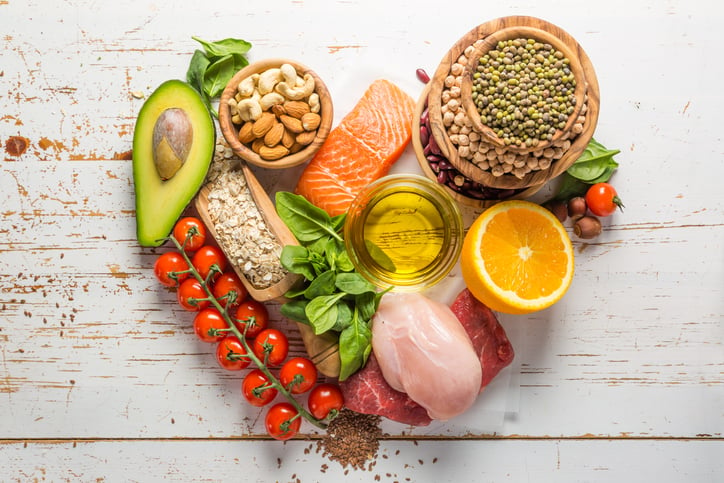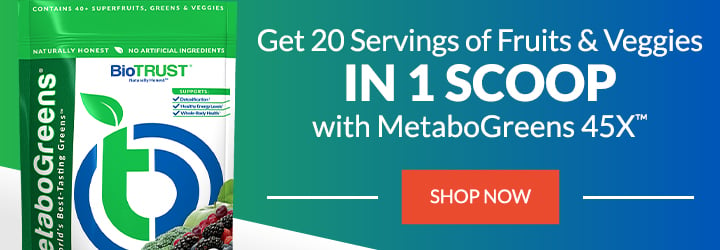These 8 Foods Help Improve Your Circulation & Blood Flow (so, eat up)

Your circulatory system (more often referred to as the cardiovascular system) is like a finely-tuned freight system running throughout your body. It runs through the highways (a network of vessels) dropping off and picking up goods (oxygen, carbon dioxide, nutrients, and hormones) at various destinations along the way (organs, such as your heart). Yet, just like roads can get clogged due to traffic, weather conditions, and even potholes—which significantly slow the delivery of freight—arteries can get clogged with plaque and fatty deposits, hampering the delivery the blood that supplies much-needed oxygen and nutrients to our cells.
Moving freight throughout the country isn’t an easy job. Yet, the circulatory system has an even greater challenge. In the average human, around 2,000 gallons of blood are pumped through about 60,000 miles of blood vessels daily, according to the Arkansas Heart Hospital. Plus, in addition to moving blood, the circulatory system is also responsible for moving a clear liquid known as lymph to help remove unwanted waste from the cells.
This is a system we should all care about deeply. When things go awry, it can lead to serious, life-threatening consequences. Without an efficient circulatory system, which includes the heart, lungs, arteries, veins, and blood vessels, our bodies are left unable to maintain a stable environment or fight off disease.
In fact, according to the American Heart Association, cardiovascular disease is the leading cause of death in the U.S., and over 92 million Americans suffer from cardiovascular disease—many of them completely unaware. It’s estimated that by 2035, more than 130 million American adults—that’s a whopping 45%—are projected to have some form of cardiovascular disease.
The most predominant cardiovascular diseases include coronary artery/heart disease (e.g., heart attack) and stroke, and some of the most common risk factors include atherosclerosis (or narrowing of the arteries caused by fatty deposits, leading the walls to thicken and stiffen) and high blood pressure (i.e., hypertension), which makes the heart work that much harder.
So, we agree: Circulation is important, and we need to do what we can to support this vitally important system. But how? If your first guess is that the foods we eat may have a pretty big impact, you’re right on track. Well done! But what are some foods that improve circulation?
8 Foods that Improve Circulation
1. Leafy Greens: When it comes to healthy nutrition, it’s really hard to go wrong by eating lots of fresh, colorful vegetables and fruits. Take leafy greens like spinach and kale, for example. They provide the fat-soluble vitamin E, which has been shown to help increase blood flow by dilating blood vessels. Other terrific sources of vitamin E include sunflower and pumpkin seeds and olives. Green leafy vegetables are also a great source of vitamin K, which is important for blood clotting and to help support healthy, flexible arteries.
2. Nuts: If you followed the low-fat diet propaganda to prevent heart disease, you might believe that nuts are a no-go due to their high fat content. Yet, nuts are loaded with a wide variety of nutrients, including vitamins that make it a one of the top foods that improve circulation. Rich sources of vitamin E, omega-3 fats, magnesium, and l-arginine, nuts may help the blood vessels dilate and again increase blood flow. And speaking of fat, most tree nuts are rich in the monounsaturated fat oleic acid, which is the very same “heart healthy” fat that makes olive oil so popular.
3. Citrus Fruits: Citrus fruits—like oranges, grapefruits, lemons, and limes—aren’t just juicy and refreshing; they’re believed to be “natural blood thinners.” They may also help strengthen capillary walls and help prevent plaque buildup, effects attributed to their high vitamin C content, which assists in dilation and blood flow. Other foods high in vitamin C, like Brussel sprouts, bell peppers, pineapple, strawberries, broccoli, guava, berries, and many more, may also be beneficial.
4. Garlic: These flavorful bulbs are another nutrient-rich foods that improve circulation, thanks in large part to their unique phytochemicals (such as allicin) that have antioxidant and anti-inflammatory properties. Like citrus fruits, they help by preventing plaque from building up and clogging arteries. Garlic has also been linked to lowering blood pressure and cholesterol, which may come back to the ability of garlic phytochemicals to inhibit key enzymes. It’s not the only food in this category that helps improve circulation; onions, leeks, and even radishes are worth keeping in your kitchen.
5. Fatty Fish: Want to stimulate blood flow and promote healthy levels of inflammation? Omega-3 fatty acids might be one of your best weapons. In addition to nuts and seeds, they can be found in wild-caught, cold-water fish like wild salmon, Pacific sardines, Atlantic mackerel, rainbow trout, anchovies, and herring as well as grass-fed meats. Plant-based sources include chia and flax seeds and avocado, but keep in mind the type of omega-3 found in these foods may not offer the same heart healthy benefits as fatty fish.
6. Tomatoes: Tomatoes get their fabulous ruby red color from lycopene, a natural antioxidant linked to improving circulation. Other lycopene-rich foods to reach for include watermelon, grapefruit, and apricots.
7. Spices: Go ahead and kick up the spices in your food. From cayenne pepper to ginger to turmeric, you’ll find they not only add lots of flavor but tons of nutrition to boot. Peppers, for example, can help strengthen blood vessels and arteries. Ginger is also known to support healthy circulation, and studies show turmeric is another circulation-supporting spice, thanks in large part to curcumin—turmeric’s active ingredient that has been shown to enhance the function of the blood vessels making up the circulatory system.
8. Beets: Beets make this list because of their rich nitrate content. Nitrates are converted to a compound called nitric oxide, which stimulates blood vessel dilation and increased blood flow.
8 Foods That Improve Circulation: A Recap
In addition to eating plenty of foods that improve circulation, remember that regular exercise can also help tremendously. Wearing tight, restrictive clothing, on the other hand, can hinder it, as can smoking. And because cardiovascular disease can be both silent and deadly, regular visits with your personal healthcare practitioner can help you look “under the hood” to ensure this system is running smoothly, helping you prevent future traffic jams.







